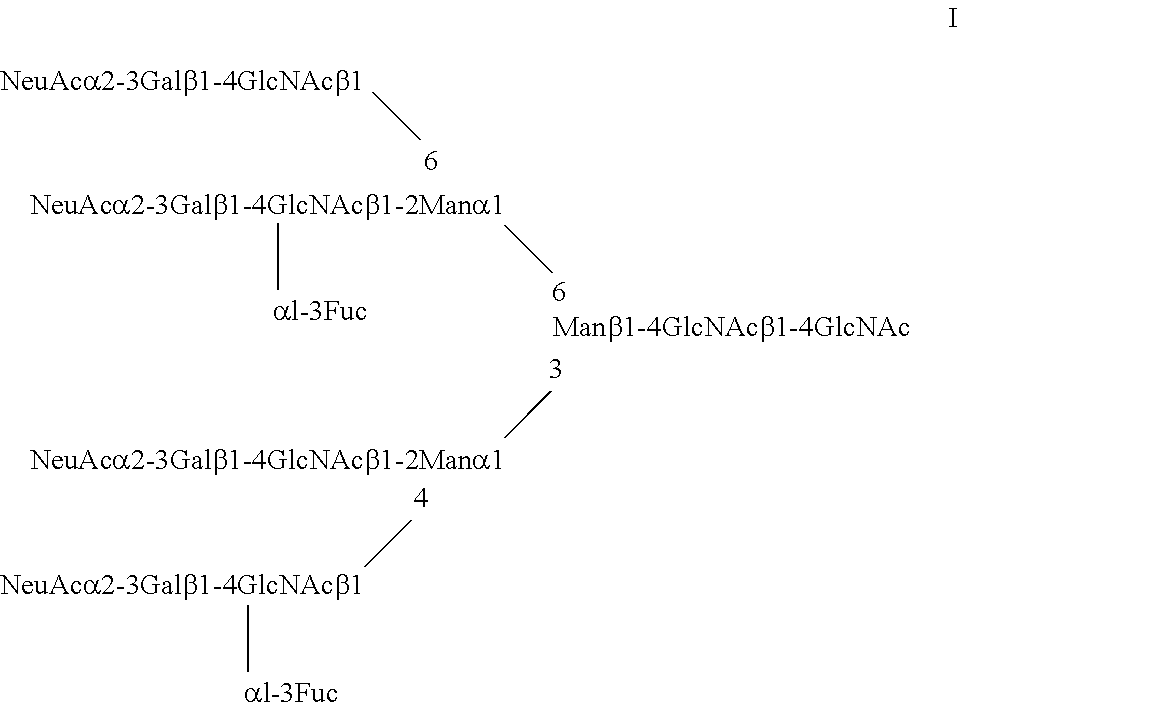Method for extracorporeal removal of a pathogenic microbe, an inflammatory cell or an inflammatory protein from blood
a technology of inflammatory cells and blood, applied in the field of extracorporeal removal of pathogenic microorganisms, can solve the problems of many scientists' failure to achieve the effect of safe and efficient treatmen
- Summary
- Abstract
- Description
- Claims
- Application Information
AI Technical Summary
Benefits of technology
Problems solved by technology
Method used
Image
Examples
preparatory example 1
[0064]Sodium metaperiodate (NaIO4, 6.0 g) was dissolved in water (994 ml) and added to Sephadex G 25 (Pharmacia Biotech, Uppsala, Sweden) (50 g) in 1 l water. The mixture was kept in the dark under shaking for 24 h. After filtration and washing with water 5×1 l and finally 0.1 M phosphate buffer, pH 7.0, the resulting product was suspended in phosphate buffer, pH 7.0 (350 ml) and a solution of polyethylenimine (100 ml Lupasol (BASF, Germany), 5% in water) was added. The gel was stabilized by addition of an aqueous solution of NaBH3CN, sodium cyanoborohydride (0.5 g in 100 ml, phosphate buffer, 0.1 M, pH 7.0). The gel was filtered and washed as described above and finally washed with acetate buffer (500 ml, 0.1 M, pH 4.0), yielding aminated Sephadex G 25 (85 g).
preparatory example 2
Covalent End-Point Attachment of Heparin onto a Chromatographic Gel
[0065]Aminated Sephadex G 25 (85 g) obtained as described in Preparatory example 1 was suspended in acetate buffer (800 ml, 0.1 M, pH 4.0) and 4.0 g nitrous acid degraded heparin (heparin from Pharmacia, Sweden) was added. After shaking for 0.5 h, NaBH3CN (0.4 g) was added. The reaction mixture was shaken for 24 h and then processed as above, yielding heparinized Sephadex G 25 (80 g).
[0066]The gel contains 2% heparin (w / w, sulfur analysis). The Sephadex G 25 beads have an average diameter of 50-150 μm. A rough calculation reveals that 1 cm3 contains 106 beads which gives a bead surface area of 0.03 m2 / cm3. Further, if heparin is attached only to the surface of the beads, a heparinized Sephadex G 25 with 2% heparin w / w has about 0.003 μg heparin / cm2.
preparatory example 3
Covalent Attachment of Heparin onto Aminated Glass Wool
[0067]A glass wool material is heparinized using the general procedure described below.
[0068]Glass wool is thoroughly cleaned with acid (HCl), rinsed with absolute ethanol, and dried in an oven at 100° C. for 4 hours.
[0069]Reactive amino functions are introduced on the glass wool surface by treatment with an aqueous solution of polyamine, polyethylenimine (PEI) or chitosan. For some purposes, the polyamines may be stabilized on the surface by crosslinking with bifunctional reagents, such as crotonaldehyde or glutaraldehyde.
[0070]The coating is further stabilized by ionic cross linking with a sulfated polysaccharide (dextran sulfate or heparin). If necessary, these steps are repeated and a sandwich structure is built up. Careful rinsing (water, suitable buffers) should be performed between each step. After a last addition of PEI or chitosan, end-point attachment (EPA) to the aminated surface of native heparin is done by reductive...
PUM
| Property | Measurement | Unit |
|---|---|---|
| pH | aaaaa | aaaaa |
| pH | aaaaa | aaaaa |
| diameter | aaaaa | aaaaa |
Abstract
Description
Claims
Application Information
 Login to View More
Login to View More - R&D
- Intellectual Property
- Life Sciences
- Materials
- Tech Scout
- Unparalleled Data Quality
- Higher Quality Content
- 60% Fewer Hallucinations
Browse by: Latest US Patents, China's latest patents, Technical Efficacy Thesaurus, Application Domain, Technology Topic, Popular Technical Reports.
© 2025 PatSnap. All rights reserved.Legal|Privacy policy|Modern Slavery Act Transparency Statement|Sitemap|About US| Contact US: help@patsnap.com

